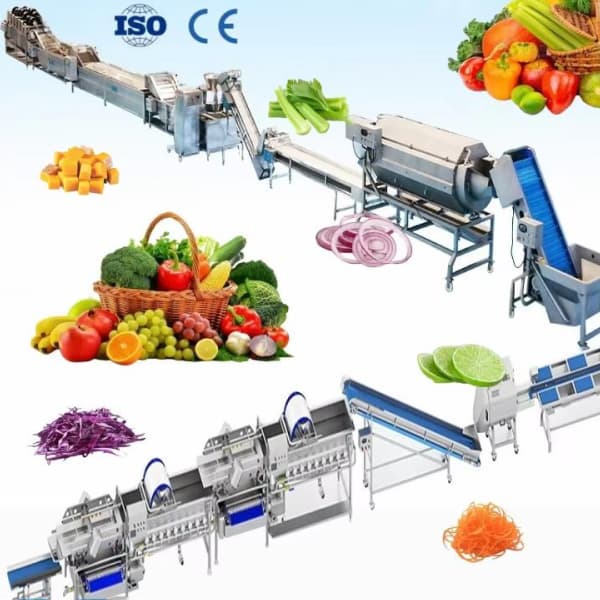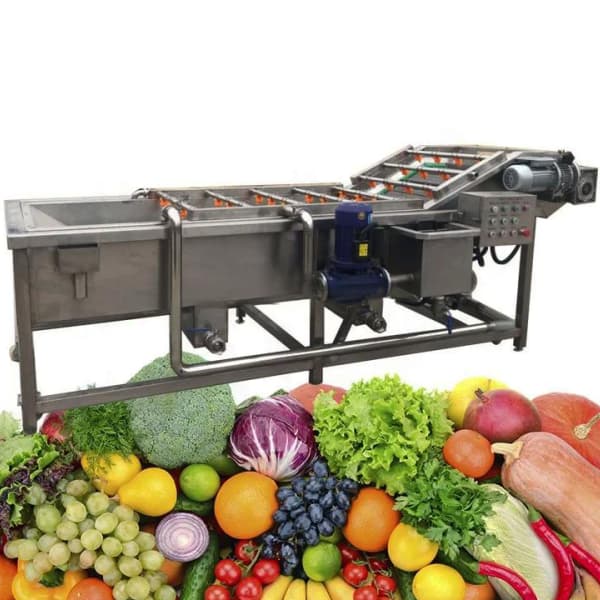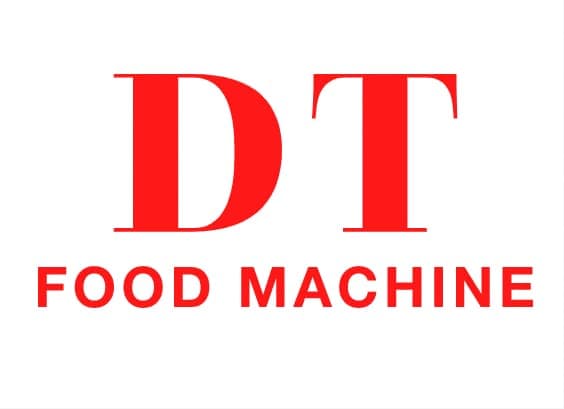1. Introducere în prelucrarea legumelor și fructelor
Prelucrarea legumelor și fructelor este unul dintre cele mai vitale sectoare din industria alimentară globală. Transformă produsele proaspete în produse cu valoare adăugată, cum ar fi sucurile, Puree, legume congelate, fructe uscate, sosuri, și conserve. Acest proces nu numai că prelungește durata de valabilitate a produselor perisabile, dar le menține și calitatea nutrițională și gustul.
Odată cu creșterea cererii de alimente gata de mâncare și sănătoase, cel industria de prelucrare a legumelor si fructelor a fost martor la progrese tehnologice rapide. De la mașini de spălat fructe la scară mică până la linii de prelucrare a legumelor complet automatizate, producătorii și investitorii recunosc potențialul imens al acestui sector.
2. Ce este prelucrarea legumelor și fructelor?
În termeni simpli, prelucrarea legumelor si fructelor se referă la metodele folosite pentru prepararea fructelor și legumelor pentru consum, depozitare, sau producție ulterioară. Implică mai mulți pași, cum ar fi spălarea, peeling, tăiere, albire, uscare, congelare, stoarcerea, și ambalaje.
Aceste procese asigură că produsele sunt sigure, igienic, și potrivit atât pentru consumul intern, cât și pentru piețele de export. Scopul este de a păstra aroma, culoare, și nutrienții materiilor prime reducând în același timp deșeurile.

3. Importanța procesării legumelor și fructelor
Importanța prelucrării legumelor și fructelor nu poate fi exagerată. Iată câteva motive cheie pentru care joacă un rol crucial în lanțul global de aprovizionare cu alimente:
- Conservarea Produselor Proaspete: Prelungește durata de viață a fructelor și legumelor care altfel s-ar strica rapid.
- Valoare adăugată: Transformă materiile prime de valoare scăzută în produse de mare valoare, cum ar fi gemurile, sosuri, sau sucuri.
- Retenția nutrițională: Liniile moderne de procesare sunt concepute pentru a reține vitaminele, fibră, si antioxidanti.
- Siguranța alimentelor: Ajută la eliminarea contaminanților și agenților patogeni prin spălare și sterilizare.
- Comoditate: Îndeplinește cererea în creștere pentru produse ușor de utilizat, cum ar fi legumele pretăiate și amestecurile gata de gătit.
4. Etape cheie în linia de prelucrare a legumelor și fructelor
4.1. Sortare și clasificare
Primul pas în lanțul de procesare este sortarea și clasificarea. Fructele și legumele proaspete sunt clasificate în funcție de mărime, maturitate, și calitate. Sistemele automate de sortare cu senzori optici pot detecta defectele de culoare și formă, asigurând uniformitatea și consistența.
4.2. Spălarea și curățarea
Următorul, produsul este curățat folosind masini de spalat legume si fructe. Aceste mașini îndepărtează murdăria, pesticide, și bacterii prin pulverizare cu apă sau sisteme de spălare cu bule. Mașinile de spălat cu eficiență ridicată sunt esențiale pentru a menține igiena și siguranța produsului.
4.3. Peeling și Tăiere
În funcție de produsul final, fructele și legumele suferă decojirea și tăierea. De exemplu, o mașină de tăiat legume poate felia, zaruri, sau maruntiti legumele in forme precise pentru salate sau amestecuri congelate.
4.4. Albire și pregătire
Acest pas implică încălzirea scurtă a legumelor pentru a dezactiva enzimele și a păstra culoarea și textura. Albirea le pregătește și pentru congelare sau conservare.
4.5. Uscare si deshidratare
În sisteme de uscare a legumelor și fructelor, apa este îndepărtată pentru a prelungi durata de valabilitate și a reduce greutatea pentru transport. Acest lucru este comun pentru fructele uscate, chips-uri, și ingrediente pentru supă instant.
4.6. Stocarea și piureul
Pentru produse precum suc de fructe, smoothie-uri, sau pasta de tomate, specializate mașini pentru smulgerea fructelor și mașini de prelucrare a pulpei sunt folosite. Aceste aparate extrag sucul eficient, păstrând în același timp aroma și conținutul nutrițional.
4.7. Ambalaj
in sfarsit, produsele procesate sunt ambalate folosind mașini automate de ambalare. Materialele de ambalare pot include borcane de sticlă, sticle de plastic, sau pungi sigilate în vid în funcție de tipul de produs.

5. Tipuri de echipamente de prelucrare a legumelor și fructelor
Modern fabrici de prelucrare a legumelor si fructelor bazați-vă pe utilaje avansate concepute pentru a maximiza eficiența, siguranţă, și calitate. Principalele tipuri de echipamente includ:
| Numele echipamentului | Funcţie | Aplicație |
|---|---|---|
| Maşină de spălat | Curata fructele si legumele folosind jeturi de apa sau bule | Merele, rosii, verdeturi cu frunze |
| Mașină de decojire | Îndepărtează pielea exterioară | Cartofi, morcovi, mango |
| Mașină de tăiere | Tăiați sau tăiați cubulețe în forme uniforme | Ceapa, ardei, merele |
| Unitate de albire | Pregătește legume pentru congelare/conservare | Fasole, broccoli |
| Cuptor de uscare | Deshidratează produc | Chipsuri de banane, mango uscat |
| Storcator / Pulper | Extrage suc sau piure | Portocale, rosii |
| Sistem de sterilizare | Asigură siguranța alimentelor | Toate articolele procesate |
| Mașină de ambalare | Sigilează și etichetează produsul final | Sucuri, alimente conservate |
6. Tehnologie avansată în prelucrarea legumelor și fructelor
În ultimii ani, industria a văzut integrarea automatizare, inteligenţă artificială, și senzori inteligenți în echipamente de procesare. Aceste tehnologii ajută la reducerea costurilor cu forța de muncă, creste productivitatea, și asigură o calitate constantă.
De exemplu:
- Sisteme optice de sortare poate detecta imperfecțiunile și poate îndepărta piesele defecte.
- Cip (Curăţare la faţa locului) sistemele reduc timpul de nefuncționare prin curățarea automată a utilajelor.
- Uscătoare eficiente din punct de vedere energetic minimizați consumul de energie, îmbunătățind în același timp uniformitatea uscării.
- Sisteme de monitorizare activate IoT temperatura pistei, umiditate, și metrici de producție în timp real.

7. Aplicații ale fructelor și legumelor procesate
Fructele și legumele procesate sunt folosite într-o mare varietate de industrii, inclusiv:
- Fabricarea alimentelor: Sosuri, supe, gustări, și mâncare gata.
- Industria băuturilor: Sucuri de fructe, smoothie-uri, și concentrate.
- Brutarie si cofetarie: Umpluturi cu fructe, gemuri, si decoratiuni.
- Piata de alimente congelate: Mazare congelata, morcovi, și legume amestecate.
- Bunuri deshidratate: Mango uscat, chipsuri de banane, si pulberi vegetale.
Această versatilitate face prelucrarea legumelor si fructelor o piatră de temelie a economiei alimentare moderne.
8. Înființarea unei fabrici de prelucrare a legumelor și fructelor
Stabilirea unui instalatie de prelucrare a fructelor si legumelor implică mai mulți pași importanți:
- Cercetare de piata: Identificați cererea pentru anumite produse (de exemplu., pulpă de mango, legume congelate).
- Aprovizionarea cu materii prime: Asigurați o aprovizionare constantă cu produse proaspete.
- Selectia echipamentelor: Alegeți mașinile în funcție de capacitatea de producție și tipul de produs.
- Aspectul instalației: Proiectați un aspect eficient al instalației cu secțiuni pentru spălare, tăiere, prelucrare, și ambalaje.
- Controlul calității: Implementarea sistemelor HACCP și ISO de siguranță alimentară.
- Conformitatea cu reglementările: Obțineți certificările cerute de autoritățile alimentare locale.
9. Exemplu de parametri tehnici
Mai jos este o mostră de specificații tehnice pentru a linie de spălare și procesare:
| Model | Capacitate (kg/h) | Putere (kW) | Consumul de apă (L/h) | Material | Dimensiuni (mm) |
|---|---|---|---|---|---|
| VF-1000 | 1000 | 3.5 | 500 | Sus304 Oțel inoxidabil | 4000×1200×1300 |
| VF-2000 | 2000 | 5.0 | 800 | Sus304 Oțel inoxidabil | 5500×1300×1400 |
| VF-3000 | 3000 | 6.5 | 1000 | Sus304 Oțel inoxidabil | 6000×1500×1500 |
10. Beneficiile investiției în echipamente de prelucrare a fructelor și legumelor
- Marje de profit mai mari: Transformați fructele și legumele crude în produse premium.
- Deșeuri reduse: Utilizați eficient fiecare parte a produsului.
- Scalabilitate: Extindeți-vă cu ușurință de la producția la scară mică la producția la nivel industrial.
- Conformitate: Îndeplinește standardele internaționale de siguranță alimentară și export.
- Sustenabilitate: Reduceți deteriorarea și impactul asupra mediului.

11. Tendințele viitoare în prelucrarea legumelor și fructelor
Viitorul lui prelucrare va fi condus de inovație și durabilitate. Tendințele cheie includ:
- Automatizare și Robotică: Liniile de procesare complet automatizate devin standard.
- Ambalaj durabil: Materialele biodegradabile și reciclabile înlocuiesc plasticul.
- Extinderea lanțului de rece: Sistemele de refrigerare îmbunătățite reduc deteriorarea.
- Alimente organice și funcționale: Cererea de alimente procesate naturale și sănătoase continuă să crească.
- Fabricare inteligentă: Optimizare bazată pe date pentru randament și eficiență energetică.
12.Echipamente moderne de prelucrare a legumelor și fructelor-Mașină de mâncare DT
Prelucrarea legumelor și fructelor nu se mai limitează la metodele tradiționale de conservare și uscare. Odată cu progresul tehnologiei, industria îmbrățișează acum automatizarea, igienă, și inginerie de precizie. Fie că ești un antreprenor alimentar, investitor, sau producător, investind in echipamente moderne de prelucrare a legumelor și fructelor poate deschide noi oportunități atât pe piețele locale, cât și pe cele internaționale.
Prin înțelegerea proceselor, utilaje, și tendințele pieței, companiile pot produce de înaltă calitate, seif, și produse alimentare hrănitoare care îndeplinesc standardele globale - asigurând profitabilitatea și durabilitatea pe termen lung.
